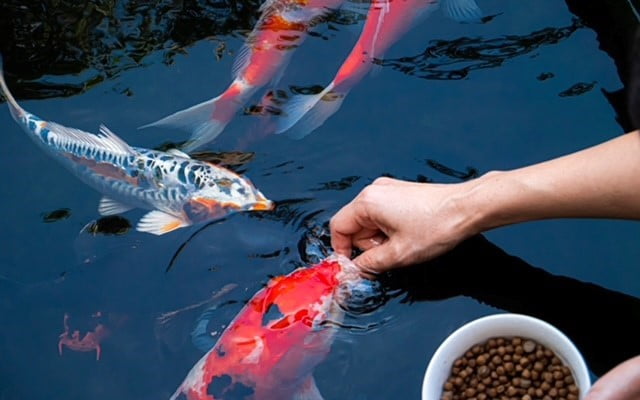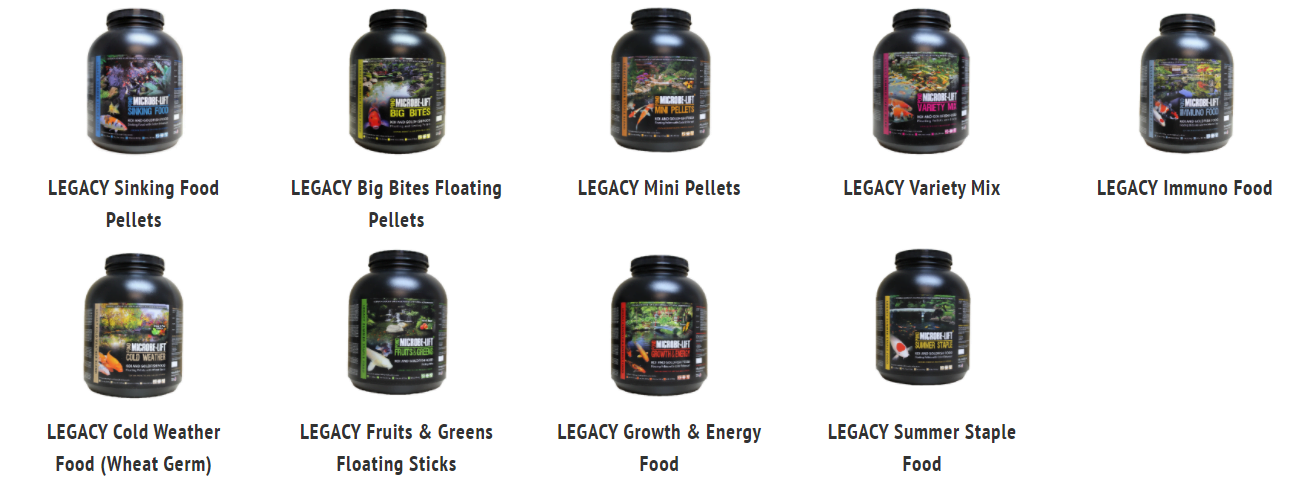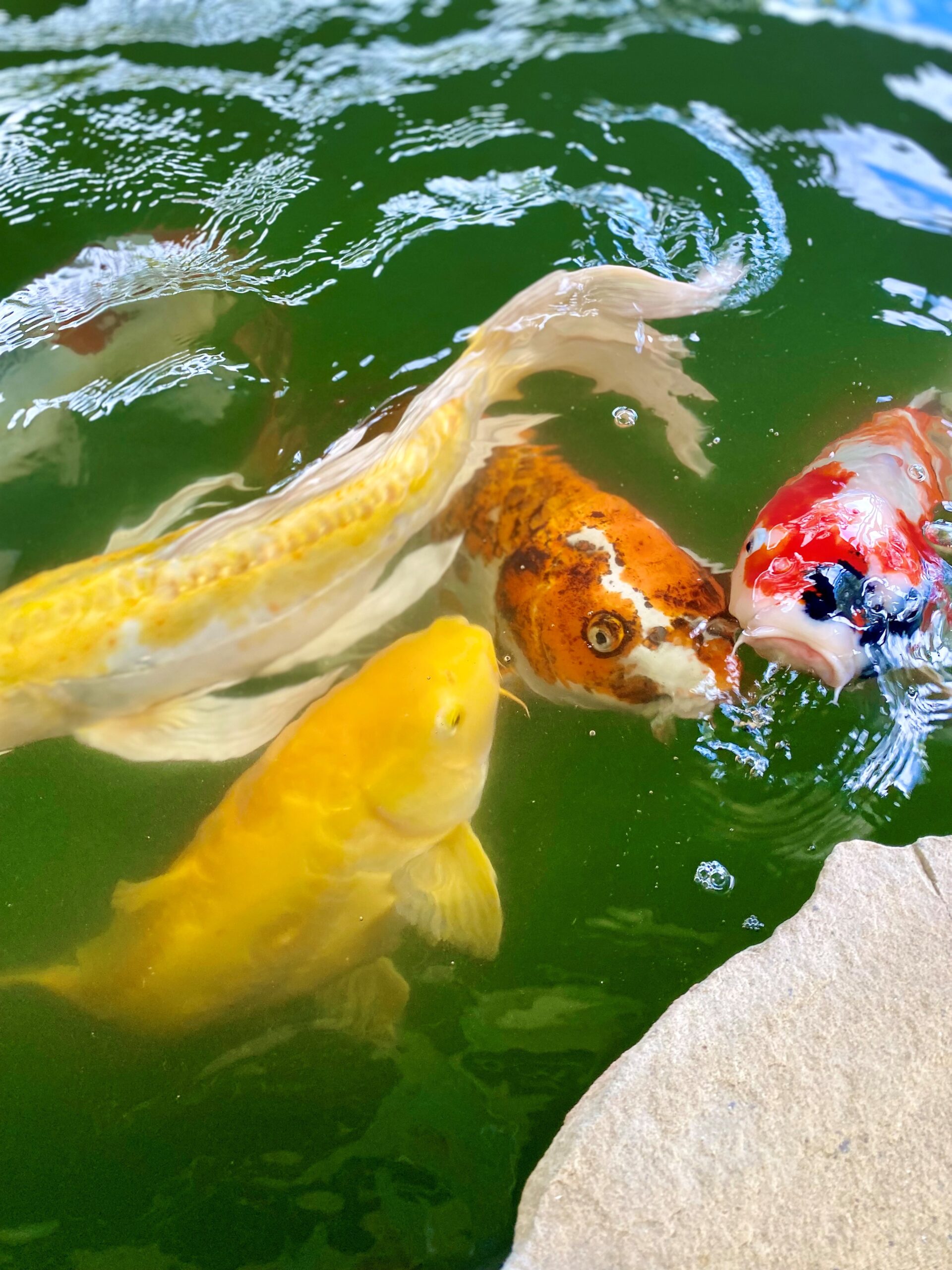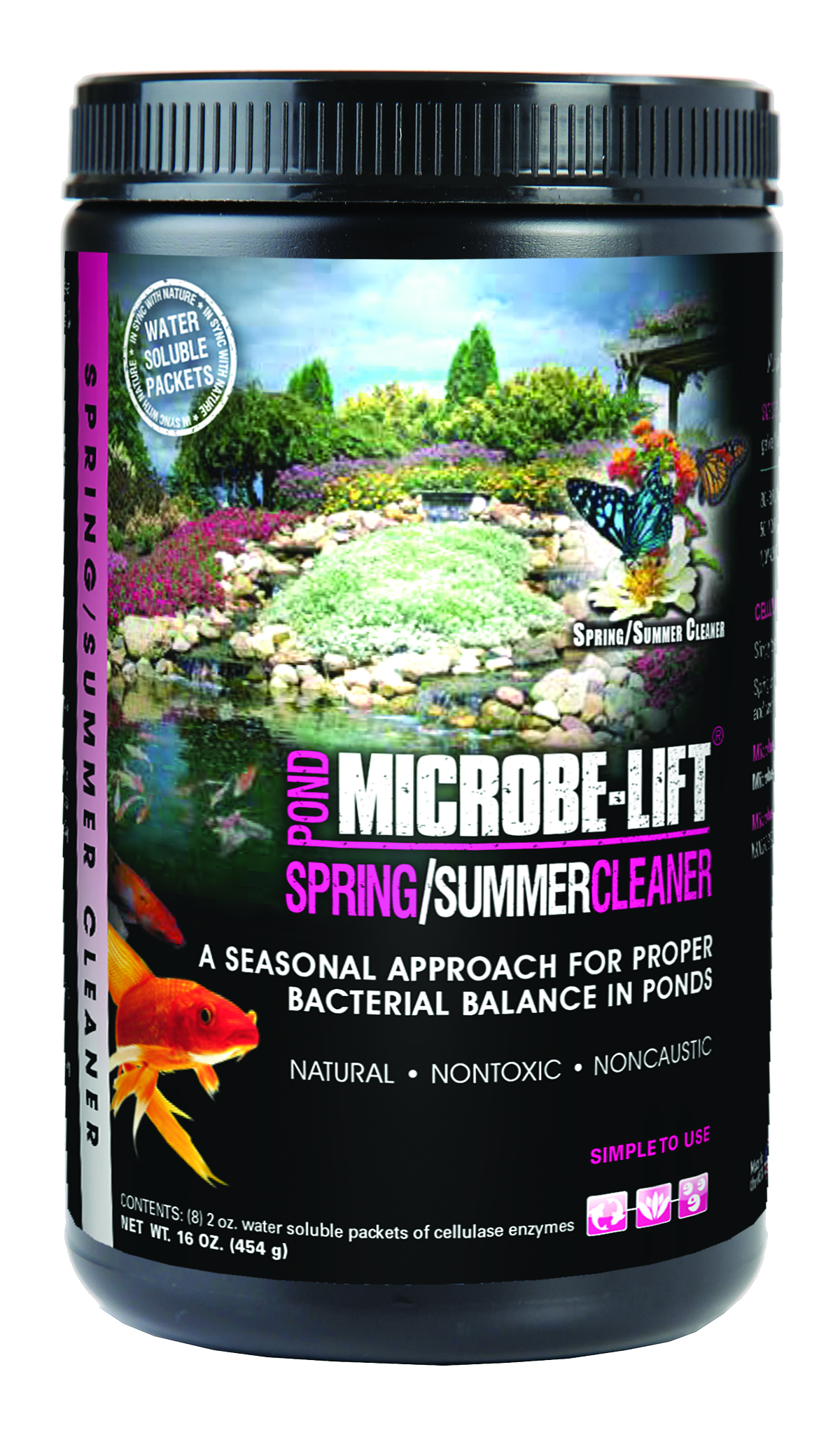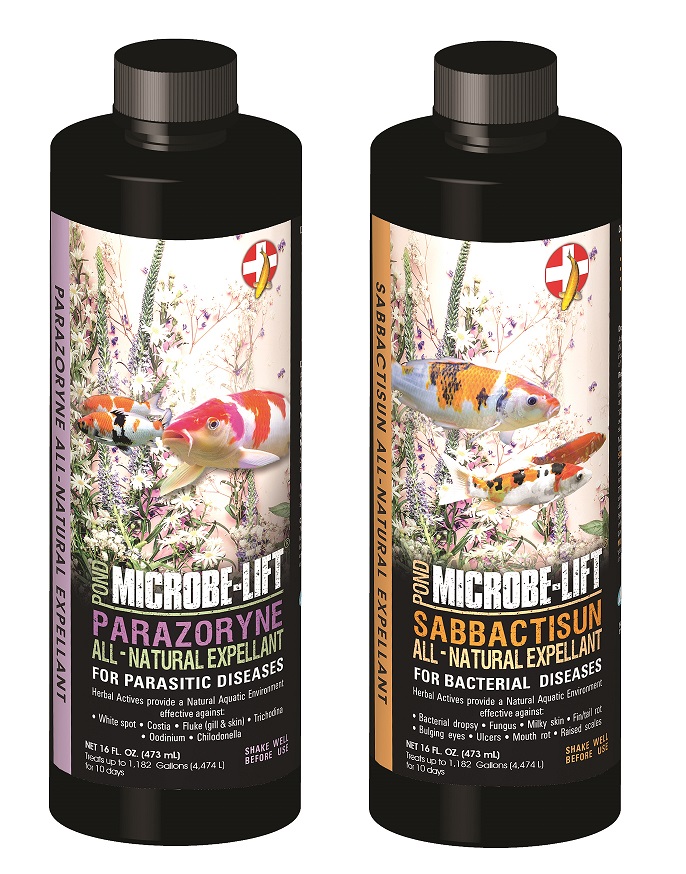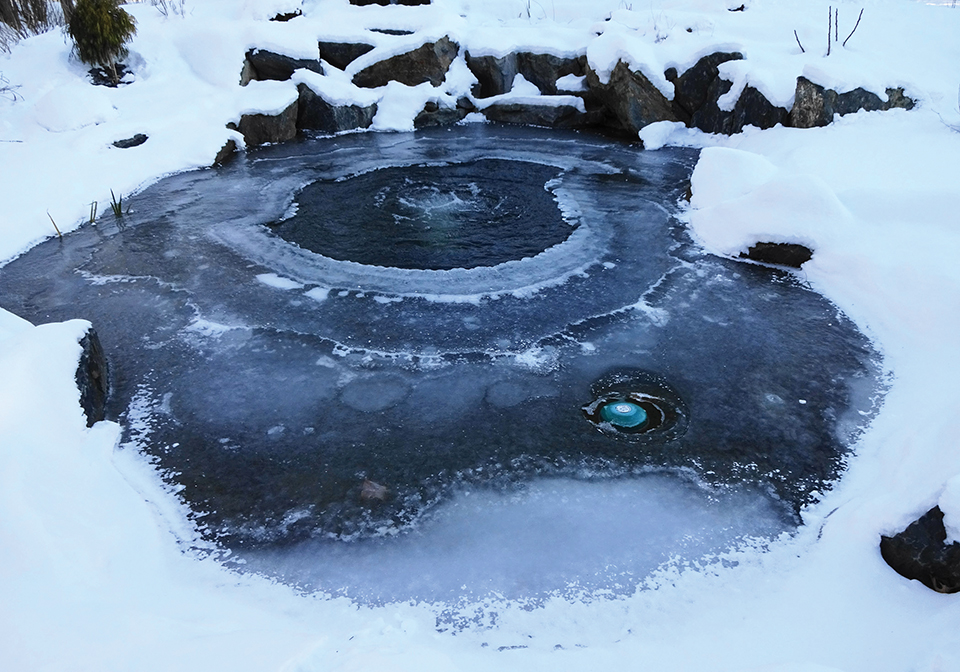Do fish “hibernate?”
The short answer is yes and no. Koi and goldfish are cold-blooded animals, so their body temperature, metabolism, and activity level are completely regulated by the temperature of the water they are in. Technically, your fish may involuntarily go into an inactive state as a result of consistent water temperatures below about 50F. This state is called torpor, or “hibernation light.” It is of similar character to true hibernation, but different. Sometimes torpor may even last for very short periods of time, but this can be dependent upon their feeding patterns as well. During this time, however, you will likely not be using any fish food. So, if you live in an area where your winters become icy-cold, you will see a substantial difference in your fish’s physiological activity—but there is no need to worry, as this is in fact torpor and completely normal.
While it may feel like you are being neglectful by not feeding your pets, it is much better for their health to hold back on doing so during the cold winter months. Why? Torpor changes much more than what you can see—it also affects their ability to digest food properly. With emphasis, it is very difficult for them to digest in this state. However, do not fret. This is—again—a normal process. Your fish will not starve in your cutting back, because nature built them to handle it!
Okay, so the warmer months are approaching… Now What?
Warmer days are indeed upon us, especially for those pond owners living in colder regions and in the process of opening their ponds back up! What you will want to do first is make sure you’ve started up your pond (refer to our other blog post “Pond Cleaner Guide for Dummies: Microbe-Lift Spring/Summer Pond Start-up.”) Following this, you will want to keep an eye on the water temperature; you can do so by sticking a pond thermometer in and checking the results daily. You will not want to start feeding before the proper time. Your fish will typically begin to slowly move about when the water temperature is above 50-55F.
So, when do you start feeding again? You will want to first observe your koi’s behavior upon coming out of torpor (while the water temperature remains above 55F, mind you), as they will still be in a lethargic and weak state. Are they (1) still hovering in one place in a section of the pond, or do they (2) appear to actively be searching around the pond and among the surface? If you said 2, then you are in the green zone to begin slowly reintroducing them to food, as they are likely searching for it. When in doubt, their behavior will always tell the tale! However, you will want to start with small amounts and only give them what they are looking for.
Microbe-Lift Supports Balanced Diets for Thriving Koi
You might question what some of the most necessary nutrients are for your dear pets. After all, it is helpful for their growth, energy, color preservation, and overall just staying healthy and happy. Microbe-Lift wanted to provide the best fish pellets in the market to meet these expectations, so we turned to Expert Fish Nutritionist Carl Webster of the Aquaculture Research Center at Kentucky State University to aid in formulating all the variations of Microbe-Lift/Koi and Goldfish Food. Here are some of the things we found:
Koi fish are what is classified as “omnivores.” In other words, much like us humans, they will eat what we eat—consisting of foods originating from both plants or other animals. With this, it is important that one ensures to provide for their koi a well-balanced diet.
There are 6 essential nutrients packed into every one of the Microbe-Lift/Koi and Goldfish foods. These said nutrients consist of, but are not limited to: proteins, carbohydrates, fats, vitamins, minerals, and water. The combination of all these nutrients provides the nourishment for your pets to give their immune system a boost, help provide body heat, and promote growth & energy. Vitamin C is also a necessity for metabolizing collagen for their bones and joints, as deficiency in this said vitamin is actually quite a common issue for koi fish. All of the Microbe-Lift/LEGACY formulations provide a generous supply of vitamin C that has a long-lasting, positive effect on koi health.
Some Notable Microbe-Lift Koi & Goldfish Food Features
As introduced above, Microbe-Lift Koi and Goldfish Foods provide essential nutrients to keep your koi happy, healthy, and prosperous throughout all of their days! Not only will these food pellets optimize fish health, but it will also have a noticeable increase in the water clarity in your pond. In a tip of the hat to these pellets, they do not break up in the water—they remain solid to ensure clearer aquatic features. Where there comes high-quality food, there comes less waste. Microbe-Lift fish food helps with easier digestion as your koi are absorbing more nutrients than they are expelling. Where there is less waste, there is also a significant decrease in the risk of excessive algae growth. Not only will this result in clear water, but it will ultimately mean less maintenance for you!
Microbe-Lift Feeding Tips
Remember, koi fish do not have a stomach. One may say that it is of high importance to feed them twice a day, we recommend doing so in moderation with small feedings. The reason for this is because of the fact that koi tend to be voracious eaters! Much like a vacuum cleaner, a hungry koi will fight hard and quick to get every bite of food it can get. For the sake of maintaining gut health, smaller feedings will help them digest their food much better. Once you find a consistent feeding schedule, try to stick to it.
Even if it was your favorite meal, imagine if you were fed the same thing every single day. You’d probably get pretty bored with it, right? Maybe you’d like a little more variety? Well, your high-class koi fish are the same way! We recommend having a primary and supplemental food to mix things up and make feeding more interesting. Doing this switch up every other few days will suffice.
If you’re interested in building a direct bond with your pets, consider hand or spoon feeding. This will train your fish to recognize the hand that feeds them, makes them want to interact more with you, and it can help you better regulate your feedings. Not only will this be good for your fish, but it will give you the full optimal satisfaction of caring for these beautiful creatures!
Pond/Koi Fish Guidance
For everything pertaining to ponds, koi, and goldfish—our Pond Expert Ms. Carolyn Weise is always at your disposal for inquiries, advice, etc.! You may reach her via email at Carolyn.weise@ecologicallabs.com or call at (239) 308-4331.

